Cognition Lectures 10 and 11- Semantics + Large Models
1/19
There's no tags or description
Looks like no tags are added yet.
Name | Mastery | Learn | Test | Matching | Spaced |
|---|
No study sessions yet.
20 Terms
Semantic Categories
Hierarchical tree of concepts
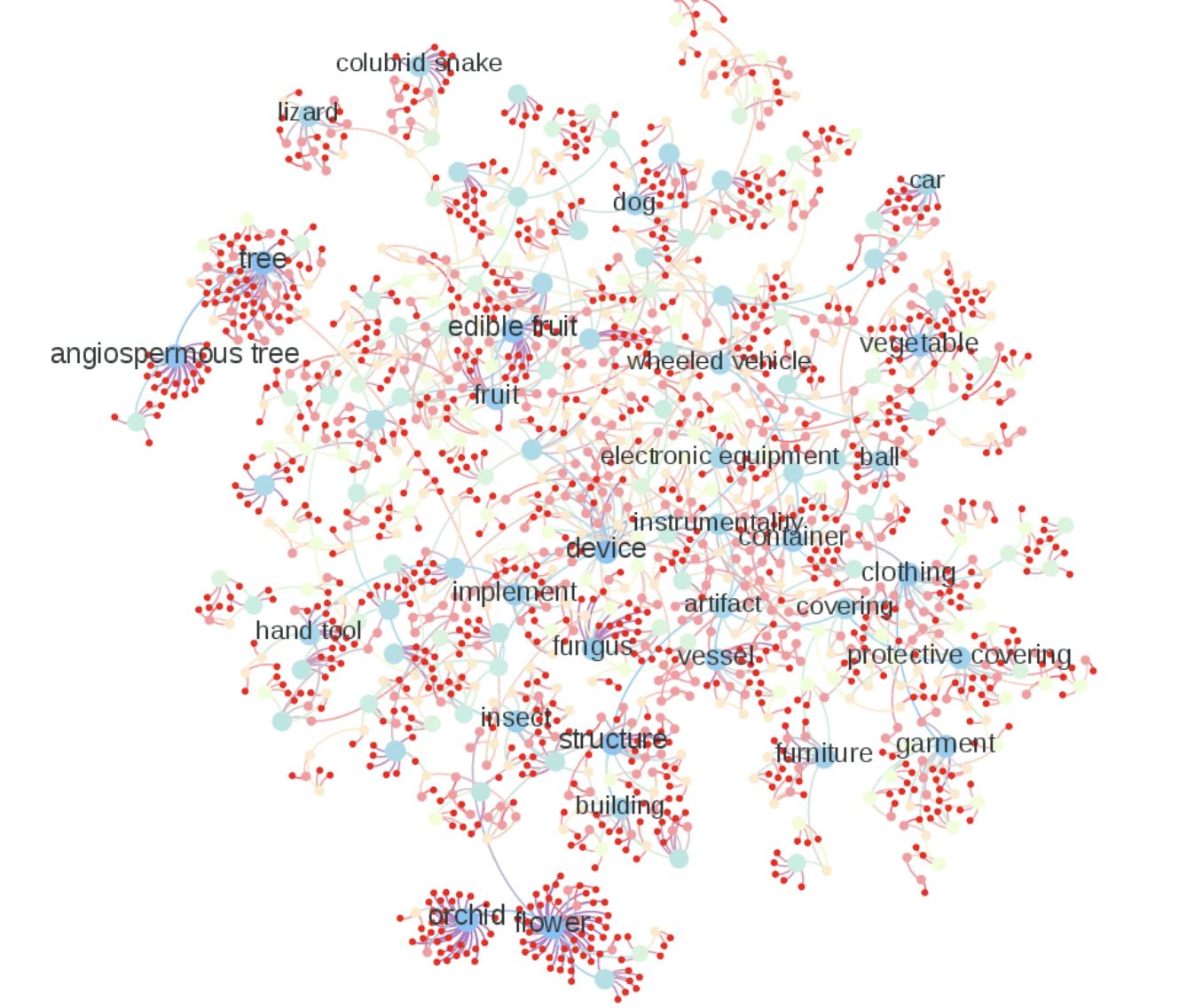
Semantic Categories
Showing people movies (a dynamic stimulus)
Can assign everything in a frame to a category
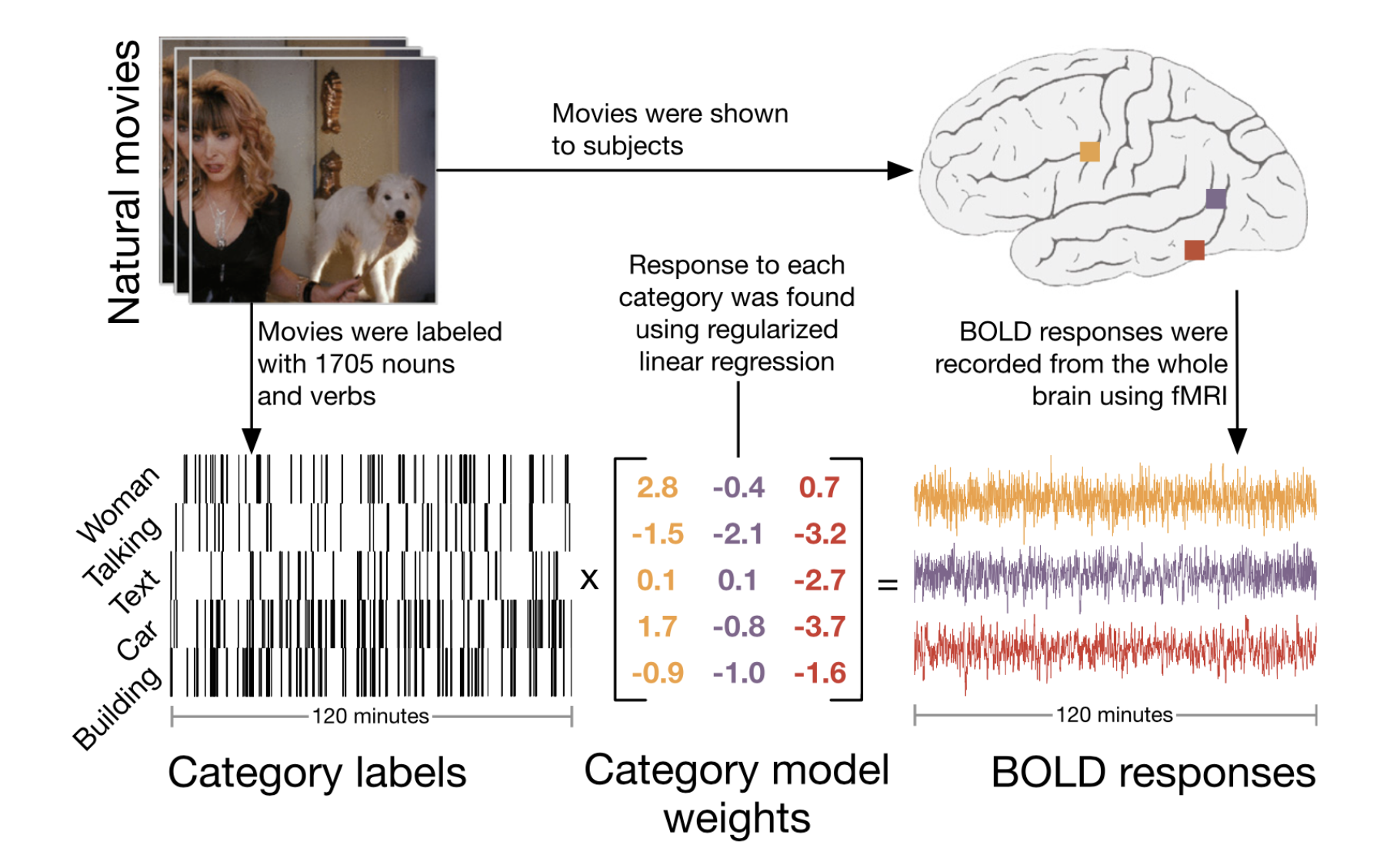
Semantic Categories (cont)
Estimating the semantic tuning of each voxel in the brain
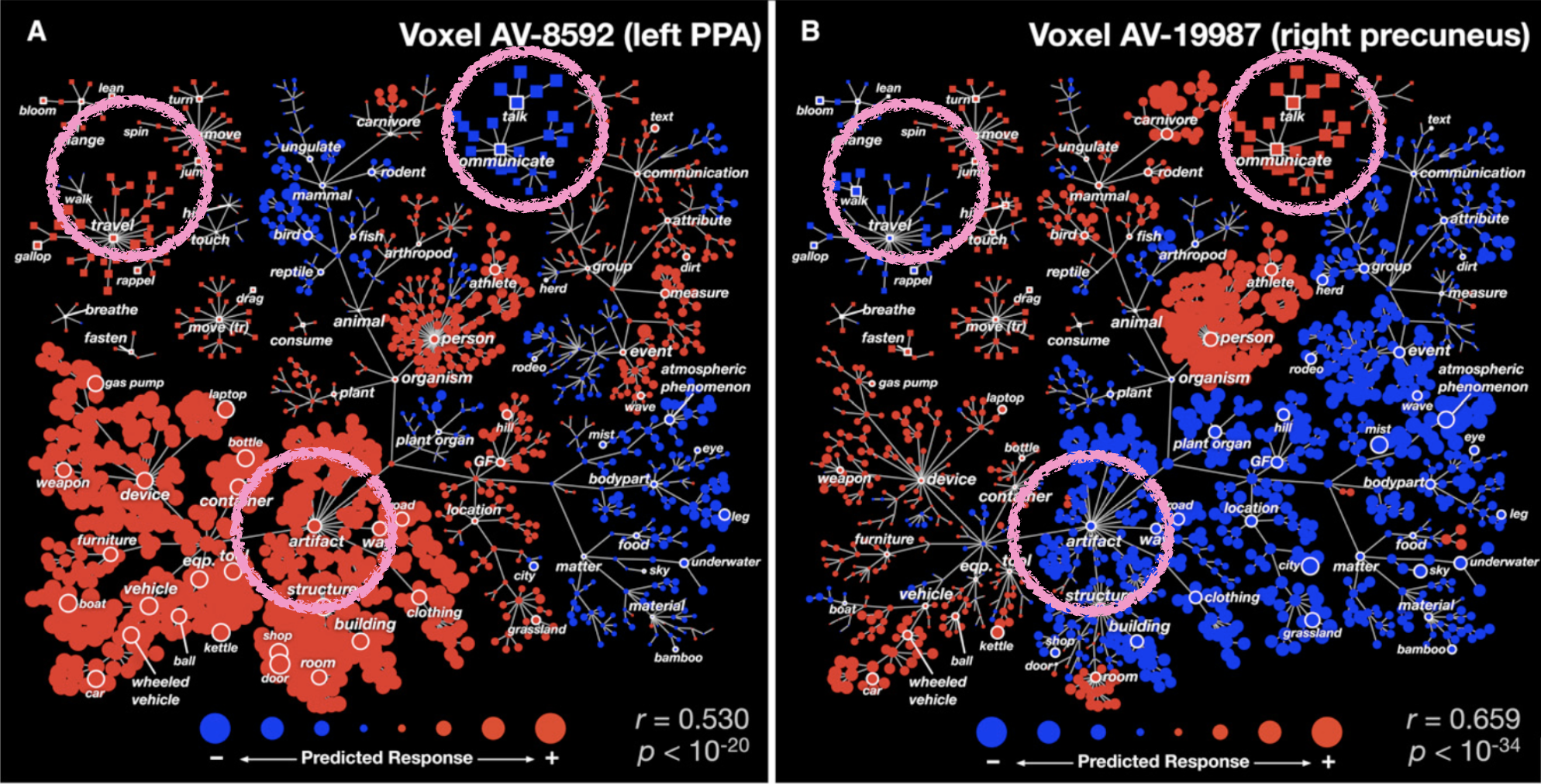
Key takeaway
Category information is widely distributed across many areas of the cortex
Stimulus-selective regions (e.g. PPA) are “selectivity peaks” in this distribution
Computational Modeling
Approximating the mind with math
Key idea: emulating the code and operations of mental representation in an alternate, artificial medium
Perceptron
The first age of the neural network
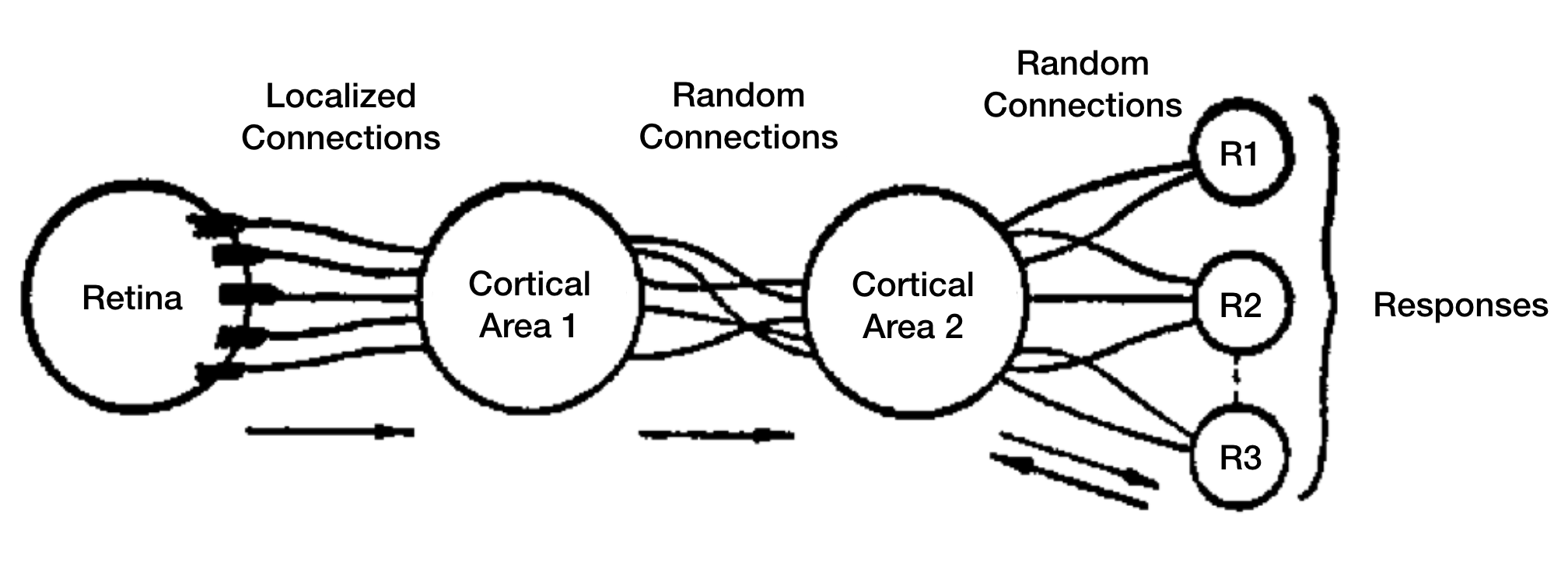
Neocognitron
Hierarchical network structure, similar to human brain
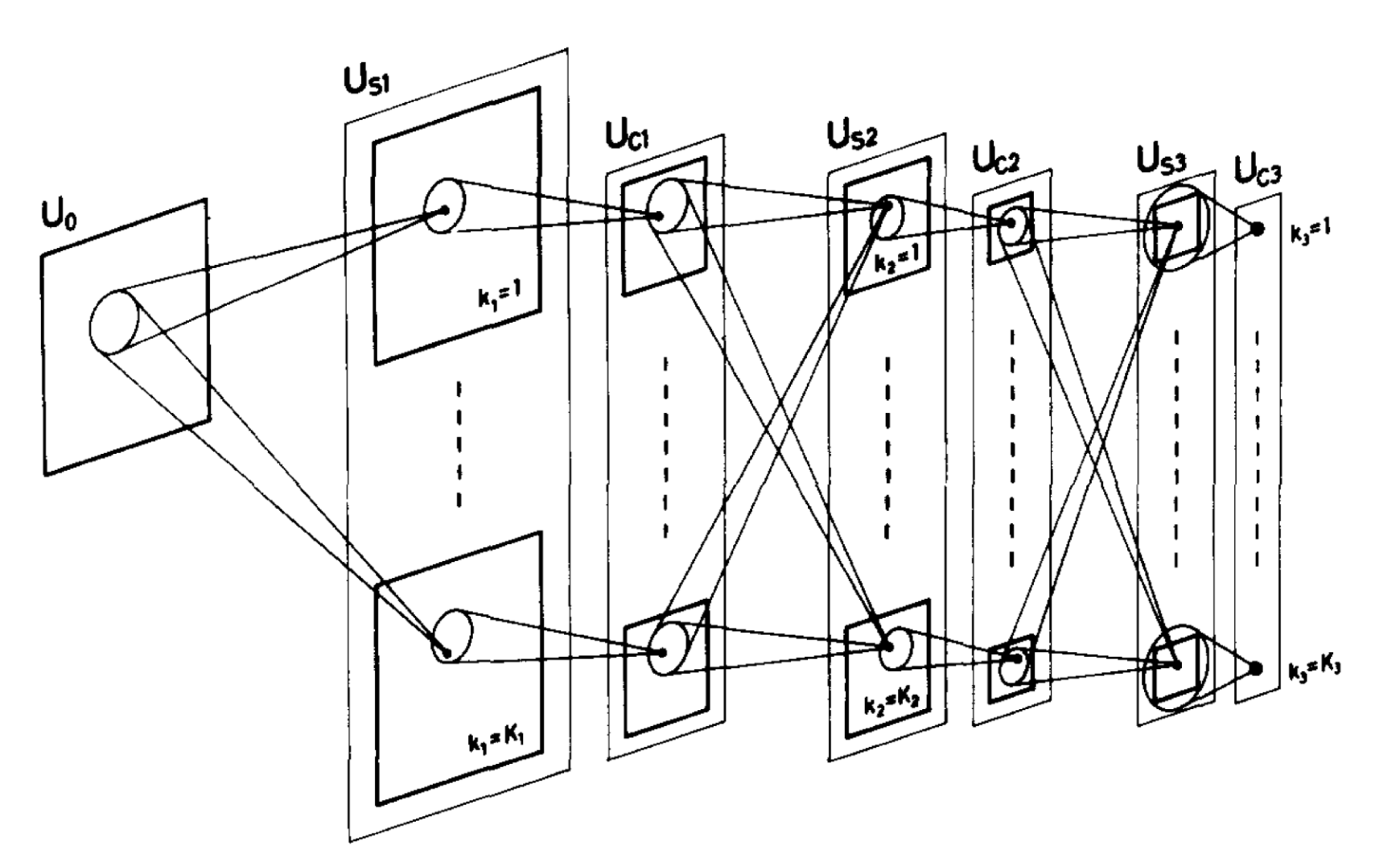
Modern Neural Networks (2012-now)
Larger version of earlier networks (more layers ~ “deep”)
The key breakthrough that enabled modern neural networks are: more layers and more training data
First breakthrough happened for visual categorization, the most explored domain up to the 2010s
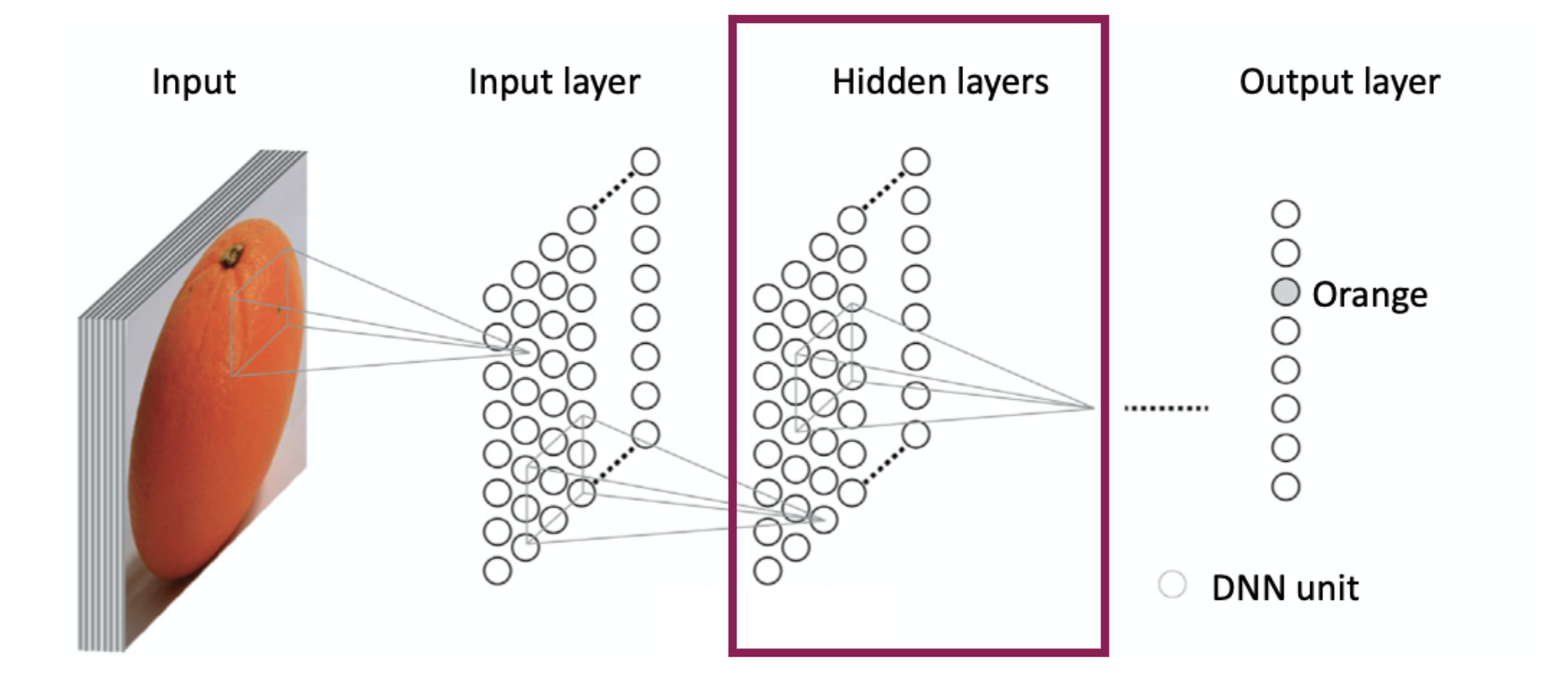
Towards Human-Scale Categorization
The first neural network that could distinguish between thousands of items

Usefulness of Deep Neural Networks (DNNs)
Good prediction for human behavior
Greatly improved ability to predict performance, judgements, and error patterns compared to e.g. HMAX
Representational Similarity Analysis (RSA)
Quantifying the joint similarity structure of a set of items
*silly picture on slides
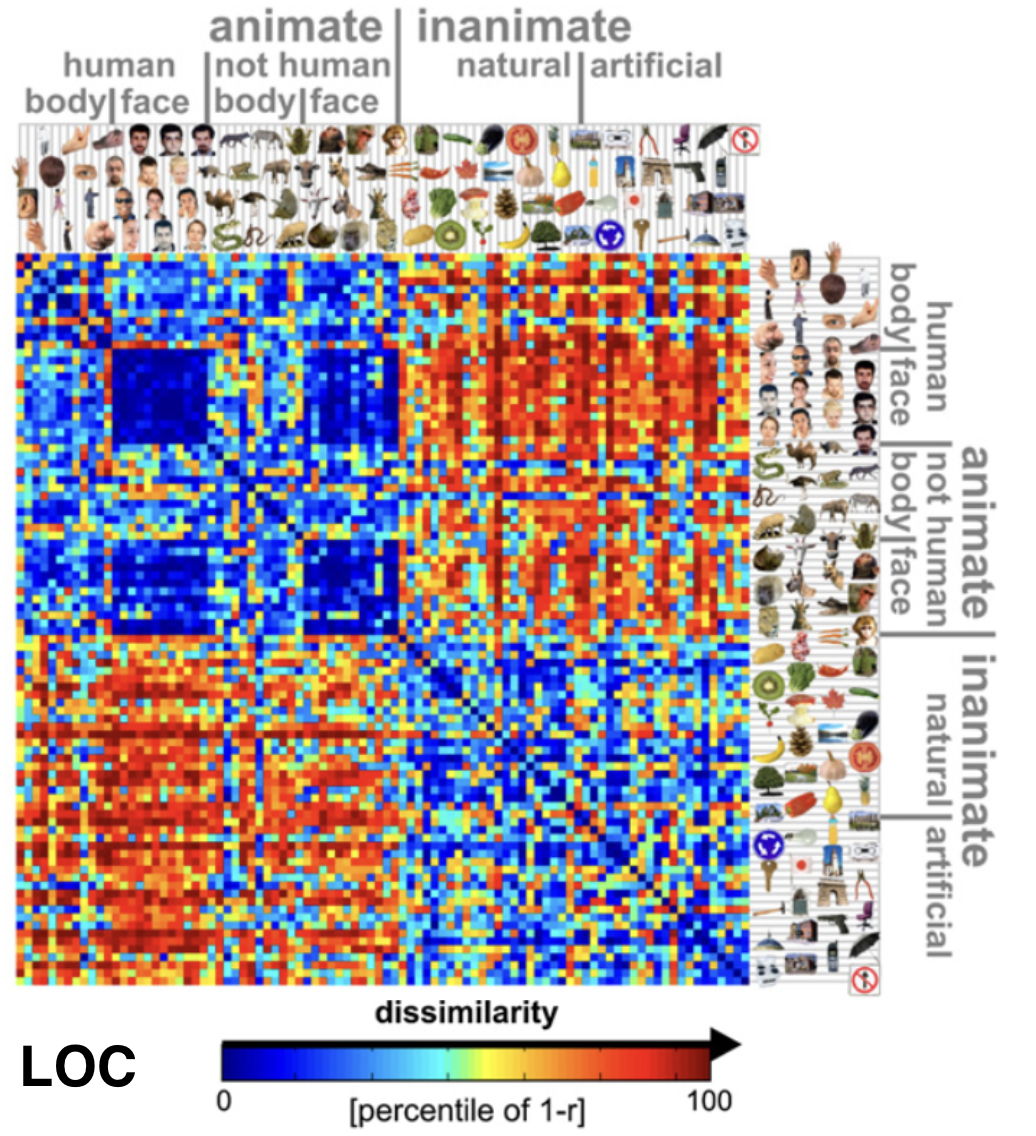
Usefulness of Deep Neural Networks (DNNs)
Good model for neural representations across (visual) cortex
Greatly improved ability to predict performance, judgments, & error patterns compared to e.g., HMAX
They start capturing things in meaning space rather than just what they look like
Usefulness of Modern Neural Networks
A lot of these networks are similar to the endpoint of computing in the brain
We can build models that predict what humans are doing
Are DNNs Good Models for the Visual System
Sort of, maybe?
Large improvements in both categorization performance and prediction IT/LO neural responses
Categories as Collections of Features
Slow vs. fast, big vs. small, furry vs. smooth, etc
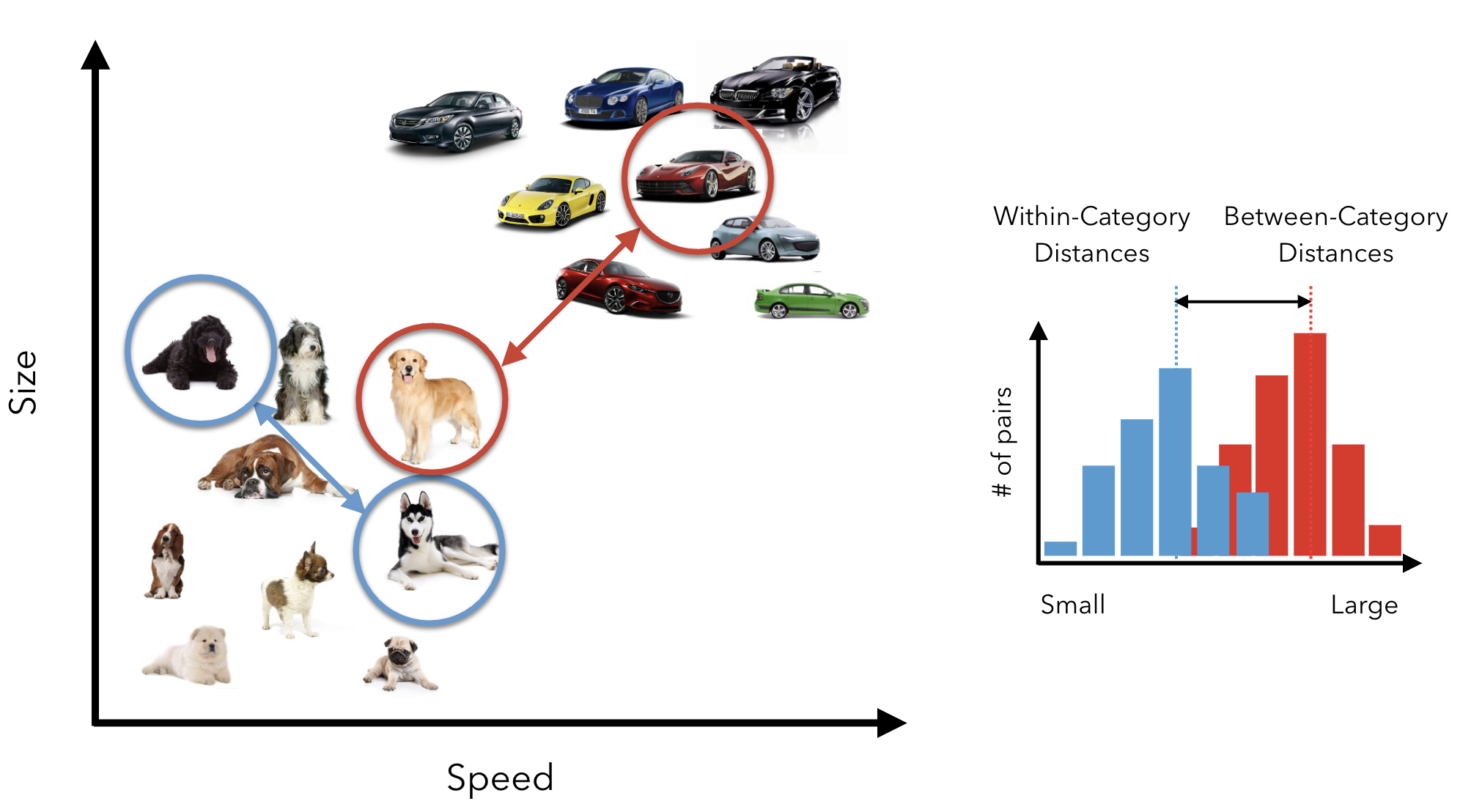
How Categorization Works: A Theory
Categories as multidimensional Twizzlers
When a image hits our retina it doesn’t look like it should
Visual system turns A into B
Are DNNs Good Models for the Visual System?
Increasingly yes; potentially because they untangle manifolds
High categorization performance and good precision of IT/LO neural responses
Emulating Complex Behavior
DeepFakes; Mimicking appearance, voice, mannerisms, etc
AI doesn't care about solving the problem you give them, they just care about giving the answer that they were trained to give
Word Embedding Models
Capturing semantic relationships between concepts
Syntactic context
“The bear was no larger than the bull”
“Told him to ride the bull, but not the bear”
“Traded two bull pelts for one bear rug”
Goal
Given an input word (“bear”)
Predict next word in the sentence
Result
Words that co-occur often are encoded
Similarly in hidden layer
Emulating Complex Cognitive Behavior
ChatGPT/Conversational Agents: Talking to the void (and it talks back)
Realistic conversations
Breadth of fact-based “knowledge”
Can convincingly sound like a real person
I.e. passes the “Turing test”
Can tell you how to build a nuclear bomb